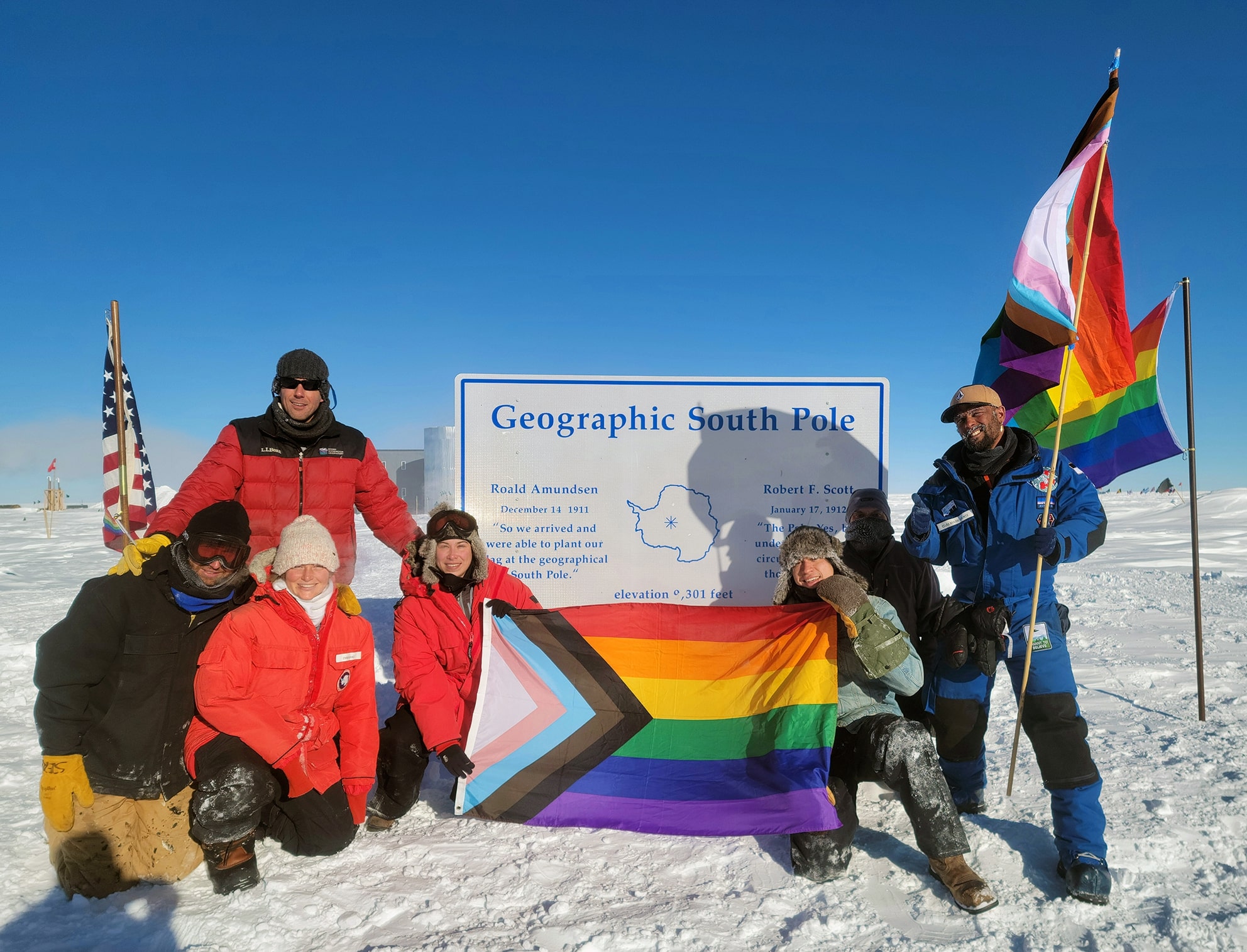Researchers and staff across Antarctica just celebrated the continent’s biggest Pride celebration ever, hoisting flags and hosting events at research bases across the continent.
An estimated 25 people congregated on Thursday for Polar Pride, which included a flag raising at the geographic south pole. LGBTQ2s+ people and allies representing bases such as McMurdo, the continent’s biggest research station, and the Amundsen-Scott gathered in the November sun to raise both the rainbow flag and the Progress Pride flag in tribute to the community.
Pride in Polar Research organizer Evan Townsend tells Xtra that the celebration was the “largest, most co-ordinated pride event that’s ever taken place on the continent.
“In most ways, Antarctic Pride is similar to how it is in the rest of the world,” says Townsend, whose group helped co-ordinate the event. “We talk, we dance and we wave our flags. We celebrate one another and our place in a large global community of people like us, and it usually takes place at a bar.”
The crowd at Polar Pride, while seemingly modest, represents a significant turnout. The entire continent has just a few thousand people living on it at any given time, and those numbers dip significantly during the winter months, which lasts from March to October. Polar night blankets Antarctica in 24/7 darkness during the winter, and severe weather conditions mean that researchers are essentially stranded on the base for eight to nine months.
But in spite of the challenges, Pride events have been held informally in Antarctica for several years. The first was in 2018, but last year researchers officially declared Nov. 18 as the now-annual “Polar Pride” celebration.
In the past, festivities varied depending on the station: some held seminars, while others drank tea or decorated cakes together. But what made this year’s Polar Pride particularly meaningful, according to many, is the official support it received from organizations like the U.S. National Science Foundation (NSF) and the British Antarctic Survey.
Wenceslas Marie-Sainte, who is currently based at the South Pole station, tells Xtra he is heartened by the momentum.
“If you would have looked at 20 years ago, people would just hide at work and [never] say that they have a boyfriend, girlfriend or husband. Today, people speak out,” says Marie-Sainte, who works as a researcher with the IceCube Neutrino Observatory. “Seeing that you can be out at work and having that support with your flag raised, that’s really, really cool. I don’t think all the institutes do that in Antarctica.”
While he has celebrated Pride at other stations over the years, Marie-Sainte says some bases have had less outwardly open and welcoming cultures, making previous celebrations more low-key.
As Polar Pride continues to grow, advocates hope to foster the spirit of inclusivity in polar research, as well as in STEM fields more generally. Nicole Hellessey, a committee member of Pride in Polar Research, pointed out that while acceptance has come a long way, greater institutional and cultural changes must happen for LGBTQ2S+ people to feel fully accepted.
“We are important and valuable members of every community, even at the end of the earth.”
“Inclusive policies at institutional and organisational levels, field gear that works and is suited to multiple genders, and even facilities to accommodate people outside of the gender binary still aren’t standard on stations,” Hellessey tells Xtra. “It’s been a great start, but there’s a long way to go, which is why we need Polar Pride: to help raise awareness of the issues and let people know we are here to advocate and stand up for them.”
Ultimately, Townsend hopes that Polar Pride’s increased visibility will remind people that LGBTQ2S+ people “aren’t limited to a place, a culture or a climate.”
“[LGBTQ2s+] people raise our flags for the same reason the early Antarctic explorers did—as proof we have challenged the limits that others told us we could never overcome,” he says. “We are important and valuable members of every community, even at the end of the earth.”


 Why you can trust Xtra
Why you can trust Xtra


